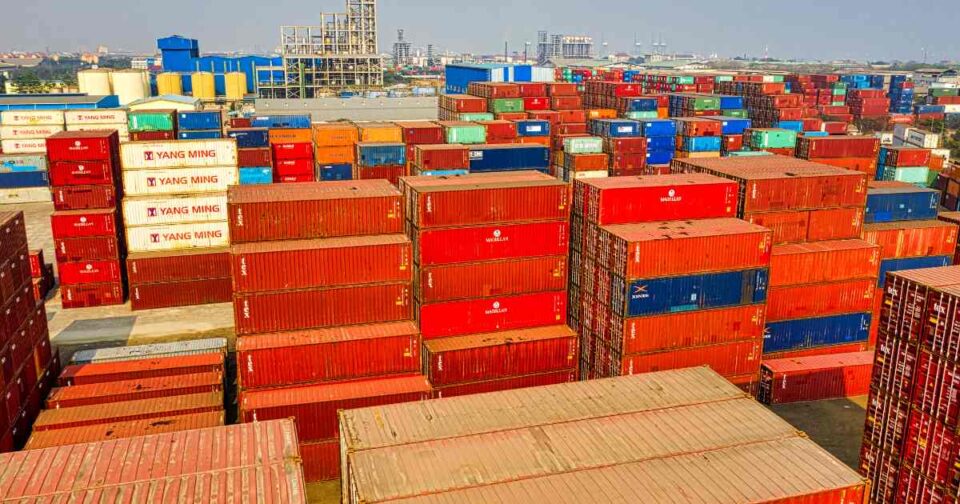Last Updated on October 21, 2025 by Admin
In this era of unprecedented inflation, “supply chain issues” frequently serve as the scapegoat for rising costs.
While this can broadly refer to anything from labor challenges to geopolitical turmoil, one of the most intricate components of a functional supply chain is transload logistics.
Transload logistics?
This is the process of transferring freight from one mode of transportation to another. It may also be called rail to truck transloading or port to truck transloading.
Increasingly, a simple intermodal handoff of container freight is no longer enough. Modern transloading professionals are expected to be at the forefront of digitization. This yields real-time visibility and faster, more accurate transportation.
Keep reading as we explore some of the latest trends in the transloading industry and innovative digital tools that optimize supply chains.
Table of Contents
Transload Logistics in Modern Supply Chains
Globalization. E-commerce. Consumer demand for fast, front-door delivery. They all add up to increased demand for transloading as a strategic logistics solution.
While container freight serves as the backbone for modern, worldwide supply chains, inefficiencies inevitably arise the moment a container arrives at a port or rail terminal. Freight operations slow down. Goods dwell in limbo. Customers want to know where their stuff is.
The best container transloading services can help logistics teams maintain speed and flexibility, especially when balancing intermodal transportation. They will connect international containers with domestic transportation. This can help prevent equipment delays and speed up last-mile delivery.
Modern transloading facilities will be equipped with container chassis, forklifts, dock systems, and staging zones. And, as you will see, they come with the latest technology and tracking tools for increased accuracy. This makes a transloading site more than just a handoff spot. It is a strategic control point that unifies upstream and downstream components of the supply chain.
Increased Digitization for Transload Optimization
Digital transformation has reshaped transload logistics. Common technologies used in the industry include transportation management systems (TMS), warehouse management systems (WMS), and specialized transportation management platforms. These systems can facilitate:
- Scheduling
- Coordination of shipments
- Automated documentation, such as bills of lading or customs forms
- Inventory tracking and load optimization
- Integration with ERP systems for better planning and forecasting
Digital platforms also enable better collaboration among 3PLs, carriers, and shippers. This reduces the potential for miscommunication and human error.
Real-Time Visibility for Unmatched Control
One of the top priorities in modern transload logistics is the demand for real-time visibility.
Historically, once a shipment was in transit or being handled at a transload facility, shippers had limited insight into its location or status.
With GPS-enabled devices and sensor technologies, transload operations can now offer minute-by-minute updates on:
- Arrival and departure times at transload facilities
- Dwell times and delays
- Environmental conditions for sensitive cargo
- Asset utilization
Visibility platforms act as control towers. The aggregate data from various systems to provide a unified view of cargo movement. This enables faster decision making and proactive responses to disruptions.
Integrating Supply Chain Systems
Transload systems do not exist in isolation. They are tightly integrated with upstream suppliers and downstream distributors. They must be seamlessly woven into the broader supply chain network.
There are numerous benefits to using digital tools to integrate these key components. Demand-driven scheduling. Inventory synchronization across all facilities. Automated alerts to partners about delays or disruptions.
Application program interfaces (APIs) and electronic data interchanges (EDIs) enable seamless data sharing. Cloud-based platforms make it easier to unify partners across regions and functions.
Reducing Dwell Time and Increasing Throughput
The goal of modern transload logistics is straightforward:
Fewer touches. No slowdowns. Faster throughput.
One of the key performance metrics in the field is dwell time. This is how long the cargo sits at a facility before continuing on its journey.
Excessive dwell time delays delivery. It leads to bottlenecks. It can result in unnecessary storage fees.
Most importantly, it leads to customer dissatisfaction.
Among the ways that digital tools can reduce dwell time include:
- Automating check-in/check-out processes
- Optimizing labor allocation through predictive staffing
- Matching transportation assets in real time
- Digital load handling to reduce handling and rework
By improving operational efficiency, digital processes can increase throughput at transload facilities. They can reduce congestion and support higher volumes without proportional increases in cost.
Barriers to Digital Transload Transformation
The benefits of transload logistics in modern supply chains are apparent.
But some challenges remain.
Legacy systems that don’t support integration. Resistance to change by industry professionals. Cybersecurity concerns about data sharing.
These challenges are not insurmountable. Organizations need to develop a clear digital strategy. They should select interoperable platforms. They must invest in change management and employee training.
Build a Better Transload Network with Digital Tools
Transload logistics is evolving. It is no longer a tactical step for moving goods. Innovative digital tools have made it a vital component of a smart, resilient supply chain. This can help reduce costs and gain the flexibility needed to navigate today’s complex logistics landscape. It helps satisfy consumer demand for speed and precision in delivery. For more of the latest trends in building and logistics, explore the content at Construction Placements for additional thought leadership!
Related Posts:
- Supply Chain Management and Logistics: The Ultimate Career Guide for 2025
- Supply Chain Manager Job description and Salary details
- How to Become a Logistics Analyst: Job Description and Requirements
- Supply Chain Analyst Job Description & Career Guide


